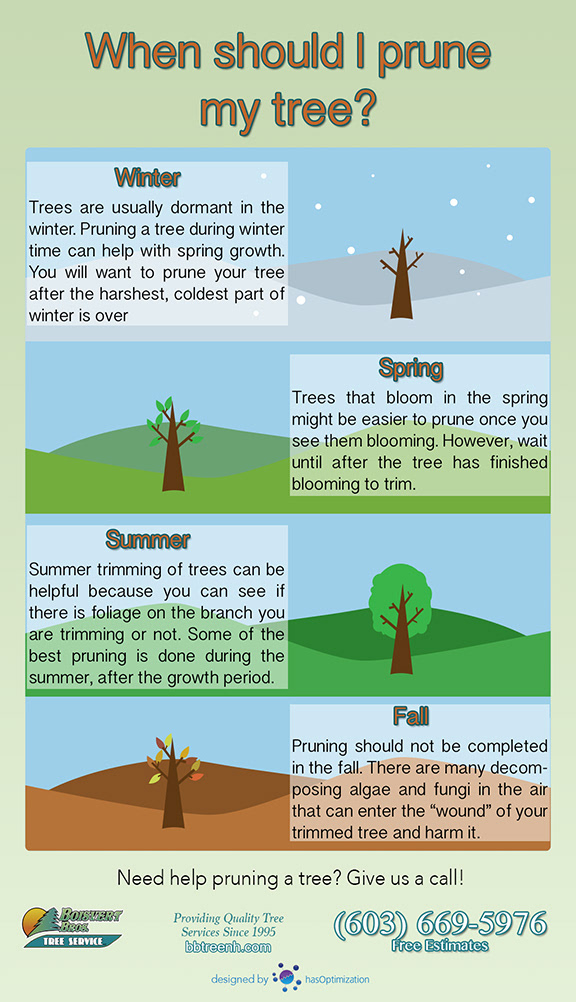Establishing The Right Time For Tree Removal - An Overview For Homeowners
Establishing The Right Time For Tree Removal - An Overview For Homeowners
Blog Article
Staff Writer-Hollis Bendixen
Trees include beauty and worth to residential property, however they can likewise pose a danger throughout severe weather events. If a tree has actually stopped expanding, is displaying visible fungal growth, or has a leaning trunk, it should be removed by a specialist to prevent home damage and injury.
To get more information, attend a home owner source fair co-hosted by HPD, the Facility for New York City Neighborhoods, and Brooklyn-based housing companions this evening in Bedford-Stuyvesant. The event will include the Property owner Manual, a new guide to help home owners browse the obligations of possessing a home.
1. Dead or Perishing Branches
Trees are an essential part of your home's landscape, supplying color and appeal. They likewise provide shelter for wild animals and create oxygen, yet even healthy trees can experience health problems that may require their elimination. Dead or passing away trees aren't just unsightly, they can be dangerous. Their branches could drop throughout a tornado, causing costly residential or commercial property damage and injuries.
When a tree's branches start to pass away, it implies that its framework is starting to break down. If the majority of its branches are dead, it is most likely time to remove it.
Seek an absence of new development, bark peeling, open wounds or dental caries, fungis expanding on the trunk or roots and a general appearance of degeneration in the entire canopy. These signs of infection can suggest a serious issue that will need specialist tree services to solve.
2. Leaning Trunk
While it's normal for trees to lean every so often because of phototropism, if a tree has a harmful or serious lean that's not due to natural processes - it could be an indication that the tree needs to be removed. If the tree is leaning toward a high-voltage line, home, automobile, play structure or any other location that could be harmful to individuals if it drops, after that getting in touch with a specialist tree service for removal ought to be a top priority.
It's likewise crucial to look for any kind of sudden changes in a tree's leaning as it can indicate damages to the roots or trunk that may result in dropping. This is specifically real throughout thundercloud, given that high winds and rain-soaked soil can create a lean to transform promptly. Routine surveillance, especially during and after tornados can aid home owners recognize potential issues with their trees so they can call an arborist for a comprehensive assessment.
3. Bug Problem
Some pest invasions, such as wood-boring pests like emerald ash borer or sap-suckers like scale bugs, are so serious that they can create a tree to die. The best way to avoid pest problem is to monitor your trees on a regular basis. Look for places, holes, or stainings in the leaves and bark. Examine visit the up coming post for fractures and signs of insect damages, such as tunnels or tracks.
If a tree comes to be also plagued with pests, or is close to a home or high-voltage line, an arborist might suggest removal. If https://www.detroitnews.com/story/news/local/detroit-city/2020/09/28/detroit-land-bank-sell-demolitions/5803480002/ leaning tree establishes a brand-new, unsteady lean, an arborist will likely recommend elimination also to ensure the security of individuals and residential property. If a damaged or dead tree continuously drops too much branches, it is an indicator that it is time to remove the tree. If a tree remains to lose branches for a prolonged time period, it can cause architectural troubles and possible residential or commercial property damage.
4. Harmed Trunk
Trees are a beautiful and vital part of our landscape, but they do require normal care to maintain them healthy and balanced and risk-free. If a tree is harmed beyond repair it is likely time for it ahead down.
Try to find indications of damages to the trunk, consisting of vertical splits, joints, dead branch stubs, visible injuries or open cavities and serious tree-rot. The presence of fungi at the base of the trunk is another warning sign. Fungi might show that the phloem and xylem (life-support tissues) are jeopardized, permitting the spread of illness or a future failure.
Additionally, consider whether the tree has stopped growing. Healthy and balanced trees will have brand-new growth every year, which might show up as buds or branches sprouting and prolonging. If you do not see any new development, it's a good idea to have an arborist review the tree and follow their recommendation for removal. please click the following web site passing away or damaged tree can drop and create residential or commercial property damages.